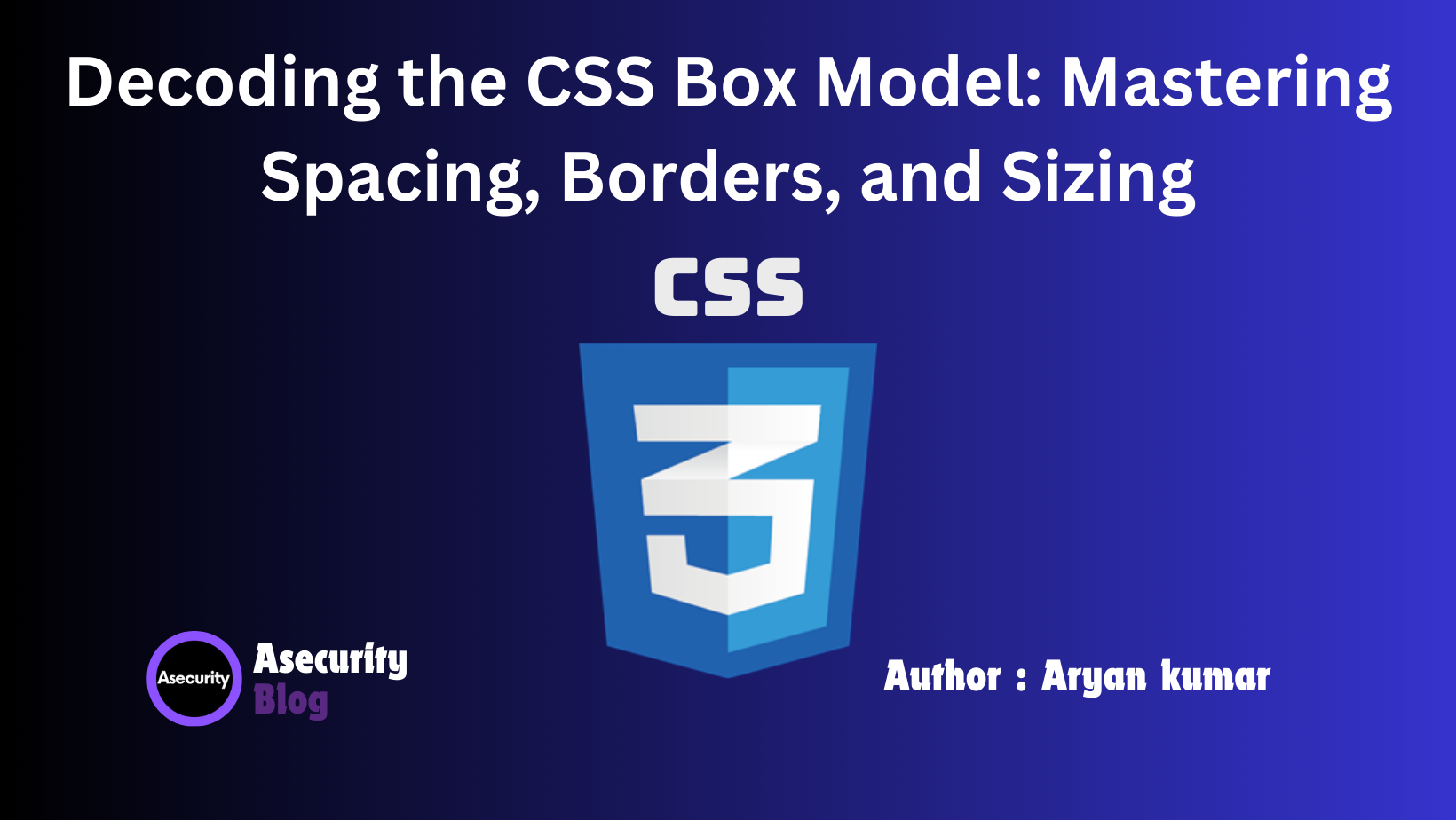Decoding the CSS Box Model: Mastering Spacing, Borders, and Sizing

As you progress in your journey to mastering CSS, one of the most fundamental concepts you'll encounter is the CSS Box Model. Understanding the Box Model is crucial for controlling the layout and design of web elements, as it determines how every element on a webpage is rendered by the browser. This blog will guide you through the intricacies of the CSS Box Model, helping you to master spacing, borders, and sizing, which are essential for creating well-structured and visually appealing web pages.
1. What Is the CSS Box Model?
The CSS Box Model is a foundational concept in web design that describes how the size of an element is calculated and how it interacts with other elements on a webpage. Each HTML element is considered a rectangular box that consists of several layers, from the content itself to the outermost margin.
The CSS Box Model comprises four key components:
- Content: The innermost part of the box, where the actual content (text, image, etc.) is placed.
- Padding: The space between the content and the border. Padding is transparent and increases the overall size of the box.
- Border: A line surrounding the padding and content. The border adds thickness to the box, which can affect the element's size and spacing.
- Margin: The outermost layer, creating space between the element and surrounding elements. Margins are transparent and do not affect the content or border directly.
2. Understanding the Components of the Box Model
Let's break down each component of the Box Model and see how they interact:
a. Content Area
The content area is where your actual content, such as text, images, or other media, resides. The width and height of this area can be explicitly defined using the width and height properties.
Example:
div {
width: 200px;
height: 100px;
}
In this example, the content area of the div element is set to 200 pixels wide and 100 pixels tall.
b. Padding
Padding is the space between the content and the border of the box. It increases the space within the box, pushing the content inward. Padding can be applied uniformly or on specific sides of the box (top, right, bottom, left).
Example:
div {
padding: 20px; /* Uniform padding */
}
div {
padding: 10px 15px 20px 25px; /* Padding: top, right, bottom, left */
}
The padding values can significantly influence the overall size of the box. For instance, adding 20px of padding on all sides increases the total width and height of the box by 40px (20px on each side).
c. Border
The border surrounds the padding and content, and its thickness adds to the total size of the element. Borders can be customized in terms of color, style, and width.
Example:
div {
border: 2px solid black;
}
This example adds a solid black border with a thickness of 2px around the element. The total width of the element now includes the width of the border.
d. Margin
Margins are used to create space between the element and its surrounding elements. Unlike padding, which affects the space within the element's box, margins push the element away from adjacent boxes.
Example:
div {
margin: 20px;
}
div {
margin: 10px 15px 20px 25px; /* Margin: top, right, bottom, left */
}
Margins do not contribute to the width or height of the element itself but instead affect the spacing around it.
3. Calculating the Box Model Dimensions
To calculate the total dimensions of an element using the Box Model, you add up the sizes of the content, padding, border, and margins:
Total Width = Content Width + Left Padding + Right Padding + Left Border + Right Border + Left Margin + Right Margin
Total Height = Content Height + Top Padding + Bottom Padding + Top Border + Bottom Border + Top Margin + Bottom Margin
Example Calculation:
If an element has the following properties:
- Content width: 200px
- Padding: 10px on all sides
- Border: 5px on all sides
- Margin: 15px on all sides
The total width of the element would be:
Total Width = 200px (content) + 10px (left padding) + 10px (right padding) + 5px (left border) + 5px (right border) + 15px (left margin) + 15px (right margin) = 260px
The total height would be calculated similarly, taking into account the padding, border, and margin values for the top and bottom sides.
4. The Box-Sizing Property: Controlling Box Model Behavior
By default, the width and height of an element only include the content area. This can sometimes lead to unintended layout issues, especially when adding padding and borders. The box-sizing property allows you to change this behavior.
Values:
content-box(default): The width and height apply only to the content. Padding and border are added to the outside of these dimensions.border-box: The width and height include the content, padding, and border, ensuring that the total size remains as specified.
Example:
div {
width: 200px;
padding: 10px;
border: 5px solid black;
box-sizing: border-box;
}
With box-sizing: border-box, the padding and border are included within the specified width and height, preventing the element from expanding beyond the intended dimensions.
5. Practical Applications of the CSS Box Model
Mastering the CSS Box Model is essential for creating well-structured layouts. Whether you're aligning elements, managing spacing, or designing responsive layouts, understanding how the Box Model works allows you to control every aspect of your element's appearance.
For example, if you're building a card-based layout, you can use padding to create space around the content, a border to define the card's edges, and margins to space the cards evenly. The box-sizing: border-box property ensures that the cards remain the same size, regardless of padding and border adjustments.
Conclusion
The CSS Box Model is a fundamental concept that underpins all web design. By understanding and mastering its components—content, padding, border, and margin—you gain precise control over your web elements' layout and appearance. As you continue to build more complex layouts, the Box Model will be your go-to tool for creating consistent, responsive, and visually appealing designs.
In the next blog, we'll explore Responsive Layouts with CSS Flexbox, a powerful tool for creating flexible and adaptive designs that look great on any screen size.
Happy coding!
Author: Aryan Kumar is a web developer specializing in HTML, CSS, and JavaScript, working at Asecurity. Contact here (Instagram) : @aryan_geek .
#webdevelopment #html #css #javascript

